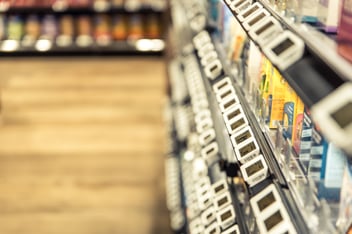.png?width=352&name=Smart%20technologies%20for%20home-min%20(1).png)
The benefits of IoT Asset Tracking
For most businesses in 2021, IoT has graduated from a buzzword to a technology worth investing in. One use for IoT that can bring significant value to companies in various sectors is IoT asset tracking.
In this post, we’re going to be walking through some of the most popular benefits of IoT asset tracking so you can better decide if it’s the next step in your IoT journey.
A wide range of asset tracking solutions can provide accurate and up-to-date location data. From satellite and cellular tracking for global long-haul operations to precise short-range positional data with Bluetooth, Wi-Fi and Ultrawideband, asset tracking technology uses a combination of hardware and data services to locate moving assets.
Real-time location data
The first benefit of IoT asset tracking is gaining real-time data of the assets. Knowing where each asset is at all times can bring truly actionable insights into the business. Having real-time location timestamps allows businesses to track where the goods are moving, to have an overview of the rest and transit times and optimise the route and whole supply chain based on the aggregated location information.
Optimisation and cost reduction
Achieving this level of asset insight allows for significant optimisation and cost savings. These optimisations are a highly flexible benefit and will vary greatly depending on your organisation’s needs.
For logistics, you can use IoT asset monitoring to paint a more accurate picture of your inventory. You can stock products more accurately, reduce unnecessary waste, and optimise your routing.
Tracking inventory this way helps reduce fuel usage and shorten the time between deliveries. Idle times aren’t good for your business or your customers, and IoT asset tracking is a great way to reduce idle times. Over time, you could even use IoT to avoid predictable traffic, which most modern solutions can’t effectively account for.
Quality monitoring
Of course, it would be remiss of us to ignore one of the core benefits of IoT asset tracking: Asset monitoring. IoT connectivity allows for remote and automatic asset monitoring. This helps reduce human interference and, by extension, human error.
In some industries, this can reduce risks to your staff that can occur when accessing assets in risk-prone areas (such as high off of the ground or located in a hazardous environment). Monitoring your assets through IoT can also improve your security, particularly in cases where you embed the asset tracking tag in the product.
Real-time data brings actionable insights for quality control of sensitive and cold-chain transportation. IoT allows businesses to gain data about the status of the assets and act if needed.
Maintenance and predictive analytics
Another key benefit of IoT asset tracking is monitoring and maintenance. IoT allows businesses to maintain a touchpoint with products deployed around the world.
For instance, if you distribute products that stay connected even after being sold, like smart homes, cities, and utility devices, then IoT connectivity can help you mitigate risks associated with your assets. You can detect when they need servicing when they’ve been lost or stolen, and you can repair software issues remotely.
Predictive analytics is especially important for vehicle assets. Avoid costly repairs by tracking the status of each vehicle and bringing it back for maintenance and repair before it breaks down.
Deter and resolve loss and theft
Two of the most significant threats to any logistics operation are loss and theft. Whether intentional or unintentional, lost items mean lost revenue. Fortunately, IoT asset monitoring is one of the best ways to resolve both of these issues.
Companies can use IoT asset tracking as a deterrent for product theft. We can see this in the case of micro-mobility, which involves deploying expensive transportation equipment like scooters or bicycles in urban areas. IoT allows these devices to be monitored and locked remotely, deterring theft and damage. The same is true for shipping centres where staff is in contact with assets.
IoT can also help resolve loss and theft by allowing you to find lost assets easily. Short and long-range IoT asset tracking solutions offer positional data, highlighting an asset’s location within a few meters. This makes recovering lost and stolen inventory much more likely.
Advance your automation strategy
Lastly, IoT asset tracking is an essential step in advancing your automation strategy. It dramatically reduces the need for human interference at various stages, as most IoT tags are always on. You can use software to track and monitor assets rather than using individuals and manual checkpoints.
In addition to being less error-prone, IoT also allows for faster response times. You can give more accurate delivery updates to customers, react faster when assets go missing and get automatic alerts for maintenance.
Upgrade to an IoT asset tracking solution with Velos IoT
To see how IoT asset tracking can benefit your business, reach out to the experts at Velos IoT today. Learn more about the different types of IoT asset tracking solutions and the benefits they can bring to your business with your quick guide. Download for free below.
![]()
Speak to a Velos IoT expert
Related articles
.png?width=352&name=Smart%20technologies%20for%20home-min%20(1).png)

Optimising Smart Shelves with Robust Cellular IoT Connectivity
In today's rapidly evolving retail landscape, businesses are constantly seeking innovative ways to...

Optimising connected electric vehicles
The future for electric vehicles has never looked brighter. EVs already make up 14% of total...

